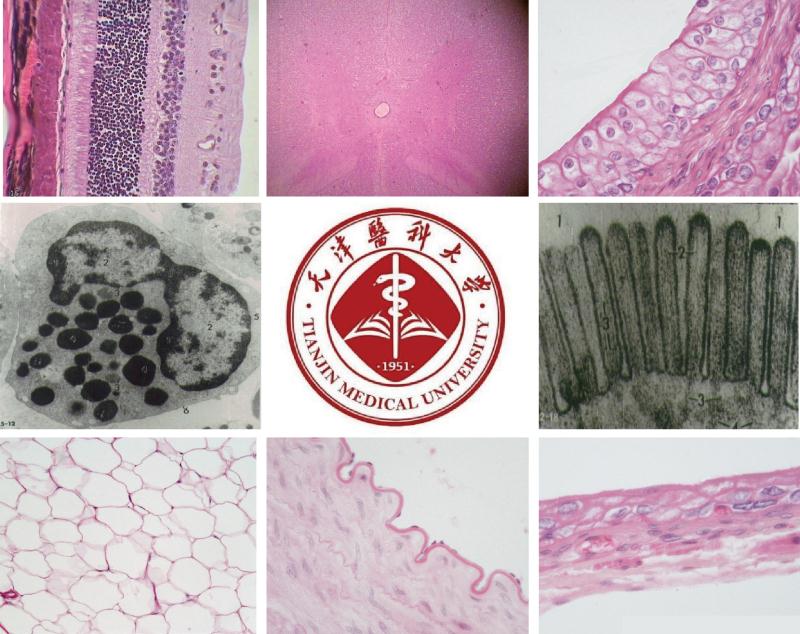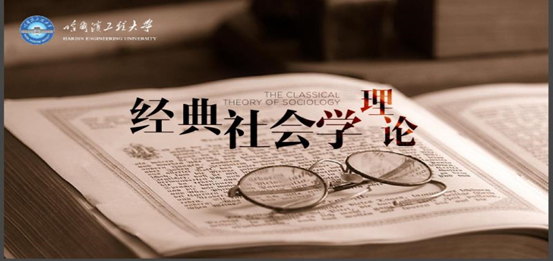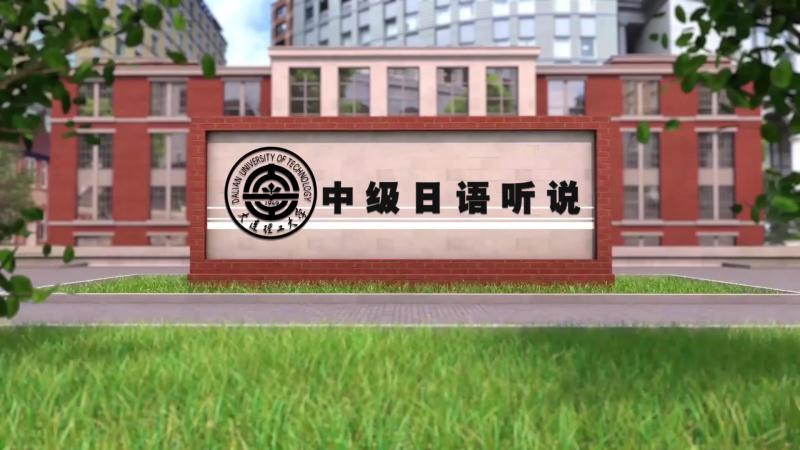
当前课程知识点:Fundamentals of Inorganic Materials Science > 5 Phase equilibrium > 5.4 Binary diagrams > 5.4.2 Binary system with a congruent melting compound and one with an incongruent melting compound
返回《Fundamentals of Inorganic Materials Science》慕课在线视频课程列表
返回《Fundamentals of Inorganic Materials Science》慕课在线视频列表
同学们好
我们学过了最简单的二元相图
这节课我们将在此基础上学习
生成一致熔融二元化合物
和不一致熔融二元化合物的两类二元系统相图
讲解过程中希望大家通过对比
两个相图的特点来学习本知识点
首先
First
看生成一个一致熔融二元化合物的二元系统相图
分析相图前
我们了解一下什么是一致熔融化合物
一致熔融化合物是一种稳定的化合物
将其加热至熔化时
所产生的液相与化合物组成相同
故称一致熔融
图中
C物质就是A和B生成的一个一致熔融化合物
很容易理解的是
所生成的化合物组成线是一条竖线
系统中生成几个化合物
两个纵坐标之间就有几条竖线
那么 如何判断相图中生成的化合物是否是一致的呢
分析这个问题之前
我们先弄清此图中两条线的含义
图中
CE1线和CE2线都是化合物C的液相线
当化合物的组成线
在其所在液相线对应的组成范围内时
就是一致熔融化合物
一致熔融化合物可以对相图进行分解
分解为两个简单相图
图中点E1为AC分二元系统相图中
AC的低共熔点
E2为BC分二元系统相图中BC的低共熔点
两个分系统相图和我们学过的
第一个最简单二元系统相图类型是一样的
我们就不再详细讲解啦
这是生成一个不一致熔化合物的二元相图
也是8类二元系统相图中比较复杂的一个相图
所谓不一致熔融化合物是一种不稳定的化合物
加热这种化合物到某一温度
便发生分解
分解产物是一种液相和一种晶相
二者组成与化合物组成皆不相同
故称不一致熔融
图中
竖线CD为不一致熔融化合物C的组成线
PE线为C的液相线
不一致熔化合物的组成线CD线
不在其液相线所对应的组成范围内
这与一致熔融化合物是不一样的
把C加热到一定温度
就发生分解
分解为P点的液相和B晶相
两者的组成和化合物组成不一样
反过来降温
P点的液相把B晶相转熔或回析就生成C
此时
P点三相共存
为无变量点
性质为转熔点
可以看出
与一致熔化合物相比
CD线不能将相图划分为分二元系统
此相图中还有一个无变量点
就是点E
E点为AC的低共熔点
注意的是E点肯定是析晶终点
但P点不一定是析晶终点
我们将通过几条析晶路线的分析来加以解释
首先看熔体1的析晶路程
将熔体1冷却到Tk温度
从液相中析出第一粒B晶体
固相点在M点
液相点随后沿液相线KP向P点变化
从液相中不断析出B晶体
固相点则从M点向F点变化
到达转熔温度TP
发生LP+B生成C的转熔过程
在转熔过程中
三相共存
系统温度保持不变
液相点在P点不动
三点一线
固相点离开F点向D点移动
当固相点到达D点
恰好对应C的组成线
意味着晶体B消失
转熔过程结束
系统中仍有液相
在B晶体耗尽以后
系统从三相平衡状态
回复到二相平衡状态
温度又可继续下降
液相点将离开P点沿与C的液相线PE向E点变化
从液相中不断析出C晶
固相点则从D点向H点变化
到达低共熔温度时
从E点液相中同时析出A晶体和C晶体
固相点则从H点到达O点
固相点与系统点重合
意味着此时全部析晶过程结束
所获得的析晶产物是A晶相与C晶相
析晶终点为E点
P点不是析晶终点
熔体1的析晶路程表达式可参见相图下方所示
下面看熔体2的析晶路线
到达P点前
和熔体1的析晶过程一致
到达转熔温度TP
发生LP+B生成C的转熔过程
仍是三相共存
系统温度保持不变
液相点在P点不动
此时固相点从F向J点移动
达到J点时
固相点与系统组成点重合
所获得的析晶产物是B晶相与C晶相
析晶终点为P点
下面看熔体3的析晶路线
在P点发生转熔时
此时固相点从F点向D点移动
到达D点时
固相点
系统组成
化合物C的组成点三点重合
意味着析晶结束
析晶产物是只有C晶相
析晶终点也为P点
最后我们来看熔体4的析晶路线
这条析晶路程比较简单了
和我们学习的第一类简单相图中的析晶路线是一样的
析晶终点为E
产物为AC两晶相
最后我们总结一下
生成一个不一致熔化合物的二元相图中
析晶路线的规律
组成在PD间DF间D点时
都会在P点发送转熔
P点是否是析晶终点
要在转熔发生时根据固相点的变化加以判断
本次课
我们讲了生成一致和不一致熔融化合物的两类相图
重点是后一类相图
希望同学们能深刻理解
下次课再见
-Test for chapter 1
-2.1 Type of defect
-2.2.1 The expression methods of point defects
--2.2.1 The expression methods of point defects
--2.2.1 The expression methods of point defects
-2.2.2 The rules for writing of defect reaction equation
--2.2.2 The rules for writing of defect reaction equation
--2.2.2 The rules for writing of defect reaction equation
-2.3 Calculation of thermal defect concentration
--2.3 Calculation of thermal defect concentration
--2.3 Calculation of thermal defect concentration
-2.4 Non-stoichiometric compounds
--2.4 Non-stoichiometric compounds
--2.4 Non-stoichiometric compounds
-Homework for chapter 2
-Test for chapter 2
-3.1 The classification of solid solutions
--3.1 The classification of solid solutions
--3.1 The classification of solid solutions
-3.2 Substitutional solid solution
--3.2 Substitutional solid solution
--3.2 Substitutional solid solution
-3.3 Interstitial solid solution
--3.3 Interstitial solid solution
--3.3 Interstitial solid solution
-3.4 The research method of solid solutions
--3.4 The research method of solid solutions
--3.4 The research method of solid solutions
-3.5 Questions for crystal imperfection and solid solution
--Questions for crystal imperfection and solid solution
-Homework for chapter 3
-Test for chapter 3
-4.1 Melt structure
-4.2 The properties of the melt
--4.2.1 The properties of the melt_viscosity
--4.2.2 The properties of the melt_surface tension
--4.2 The properties of the melt
-4.3 The characteristics of glass
--4.3 The characteristics of glass
--4.3 The characteristics of glass
-4.4 The formation of glass
--4.4.1 The formation of glass_kinetics conditions
--4.4.2 The formation of glass_crystal chemical conditions
-4.5 The structure of glass
-4.6 The typical glass
-4.7 Questions for melt and glass
--Questions for melt and glass
-Test for chapter 4
-5.1 Phase equilibrium in silicate systems
--5.1 Phase equilibrium in silicate system
--5.1 Phase equilibrium in silicate system
-5.2 One-component system phase diagram
--5.2 One-component system phase diagram
--5.2 One-component system phase diagram
-5.3 Applications of one-component diagrams
--5.3 Applications of one-component diagrams
--5.3 Applications of one-component diagrams
-5.4 Binary diagrams
--5.4.1 Binary diagram with eutectic point
--5.4.2 Binary system with a congruent melting compound and one with an incongruent melting compound
--5.4.3 Other five types of phase diagrams of binary systems
-5.5 Applications of binary phase diagrams
--5.5 Applications of binary phase diagrams
--5.5 Applications of binary phase diagrams
-5.6 Ternary diagrams
--5.6.1 Representation of ternary system composition
--5.6.1 Representation of ternary system composition
--5.6.2 Three-dimensional state diagram and plane projection diagram of a simple ternary system
--5.6.2 Three-dimensional state diagram and plane projection diagram of a simple ternary system
--5.6.3 (1) Basic types of ternary phase diagrams
--5.6.3 (2) Basic types of ternary phase diagrams
--5.6.3 (3) Basic types of ternary phase diagrams
--5.6.3 Basic types of ternary phase diagrams
-5.7 Applications of ternary phase diagrams
--5.7 Applications of ternary phase diagrams
--5.7 Applications of ternary phase diagrams
-5.8 Research methods of phase equilibrium
--5.8 Research methods of phase equilibrium
--5.8 Research methods of phase equilibrium
-5.9 Questions for phase equilibria
--Questions for phase equilibria
-Homework for chaper 5
-Test for chapter 5
-6.1 Overview of diffusion
-6.2 The kinetic equations of diffusion
--6.2 The kinetic equations of diffusion
--6.2 The kinetic equations of diffusion
-6.3 The thermodynamic equation of diffusion
--6.3 The thermodynamic equation of diffusion
--6.3 The thermodynamic equation of diffusion
-6.4 Diffusion mechanisms and diffusion coefficient
--6.4 Diffusion mechanisms and diffusion coefficient
--6.4 Diffusion mechanisms and diffusion coefficient
-6.5 Diffusion in solid
-6.6 Factors affecting diffusion
--6.6 Factors affecting diffusion
--6.6 Factors affecting diffusion
-6.7 Questions for diffusion
-Homework for chaper 6
-Test for chapter 6
-7.1 Overview of solid state reactions
--7.1 Overview of solid state reactions
--7.1 Overview of solid state reactions
-7.2 Kinetic equation of solid state reaction
--7.2 Kinetic equation of solid state reaction
-7.3 Factors affecting the solid state reaction
--7.3 Factors affecting the solid state reaction
--7.3 Factors affecting the solid state reaction
-Homeword for chapter 7
-8.1 The categories of phase transformation
--8.1 The categories of phase transformation
--8.1 The categories of phase transformation
-8.2 Crystallization
--8.2.1 Crystallization thermodynamics
--8.2.2 Crystallization kinetics
-8.3 Phase Separation of glass
--8.3 Phase separation of glass
--8.3 Phase separation of glass
-8.4 Questions for phase transformation
--Questions for phase transformation
-Test for chapter 8
-9.1 Overview of sintering
-9.2 The driving forces and models of sintering
--9.2 The driving forces and models of sintering
--9.2 The driving forces and models of sintering
-9.3 Solid state sintering
--9.3.1 Evaporation-Condensation mass transfer
--9.3.2 Diffusion mass transfer
-9.4 Liquid phase sintering
--9.4.2 Solution-Precipitation mass transfer
-9.5 Grain growth and secondary recrystallization
--9.5.2 Secondary recrystallization
--9.5 Grain growth and secondary recrystallization
-9.6 Factors affecting sintering
--9.6 Factors affecting sintering
--9.6 Factors affecting sintering
-9.7 Questions for sintering
-Homework for chapter 9
-Test for chapter 9





